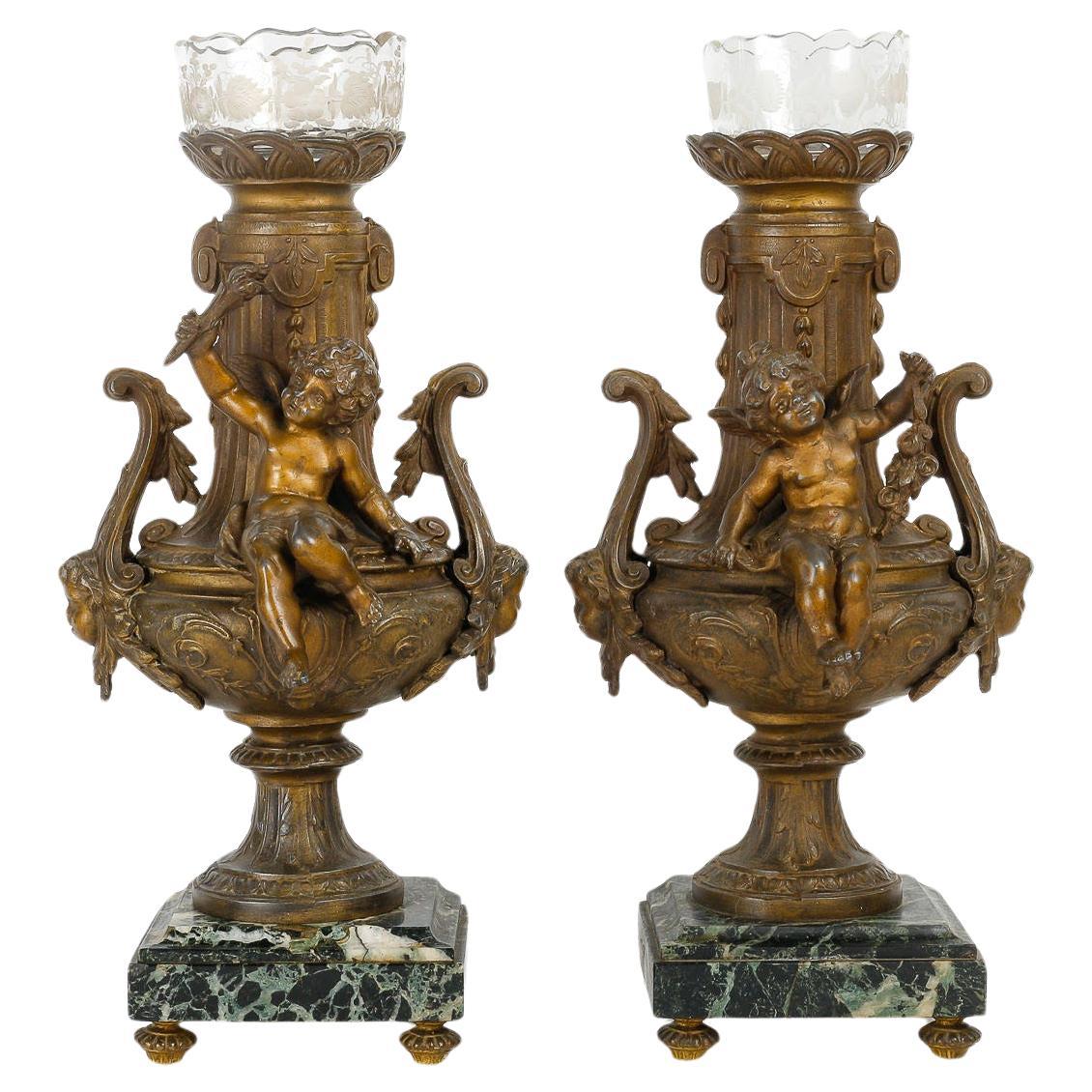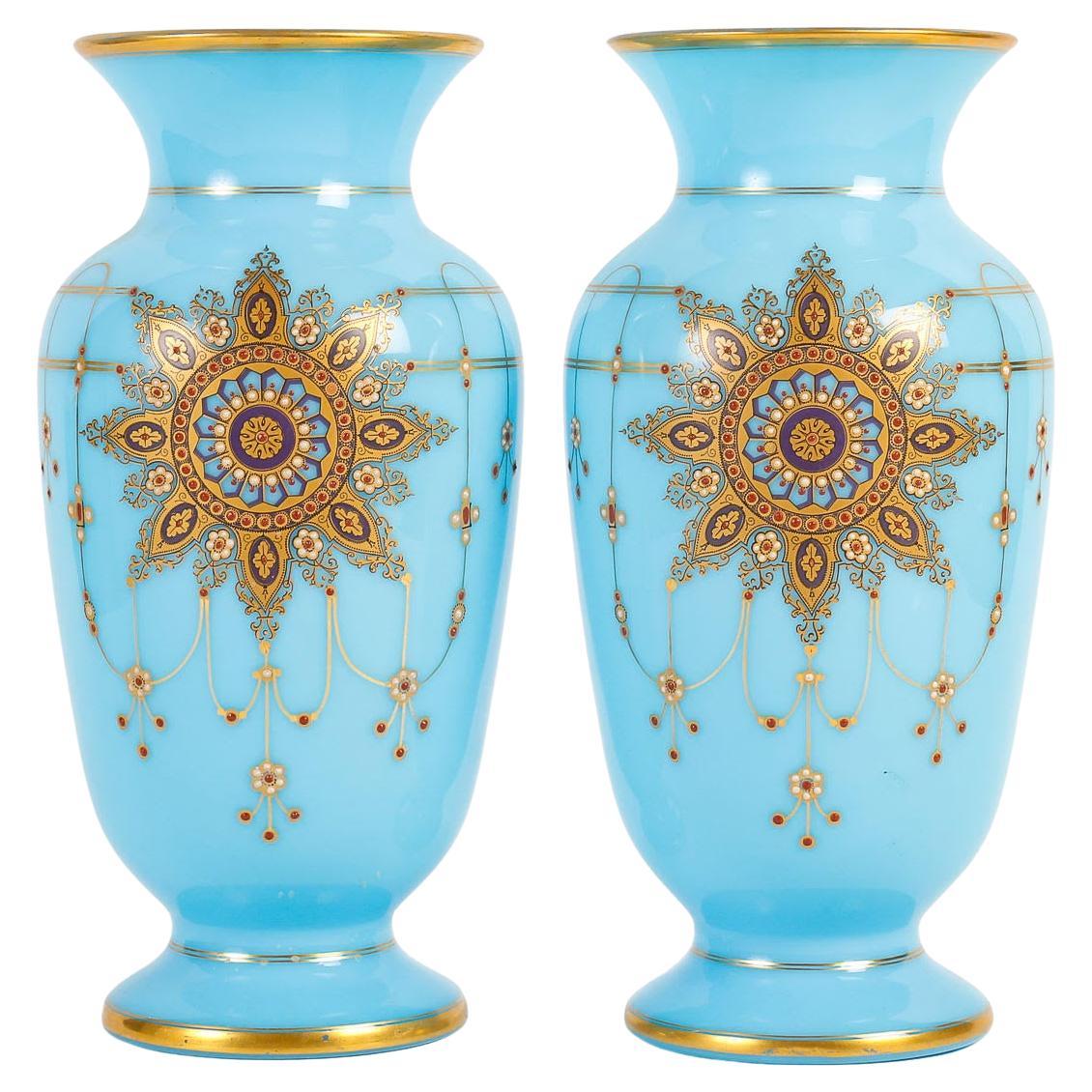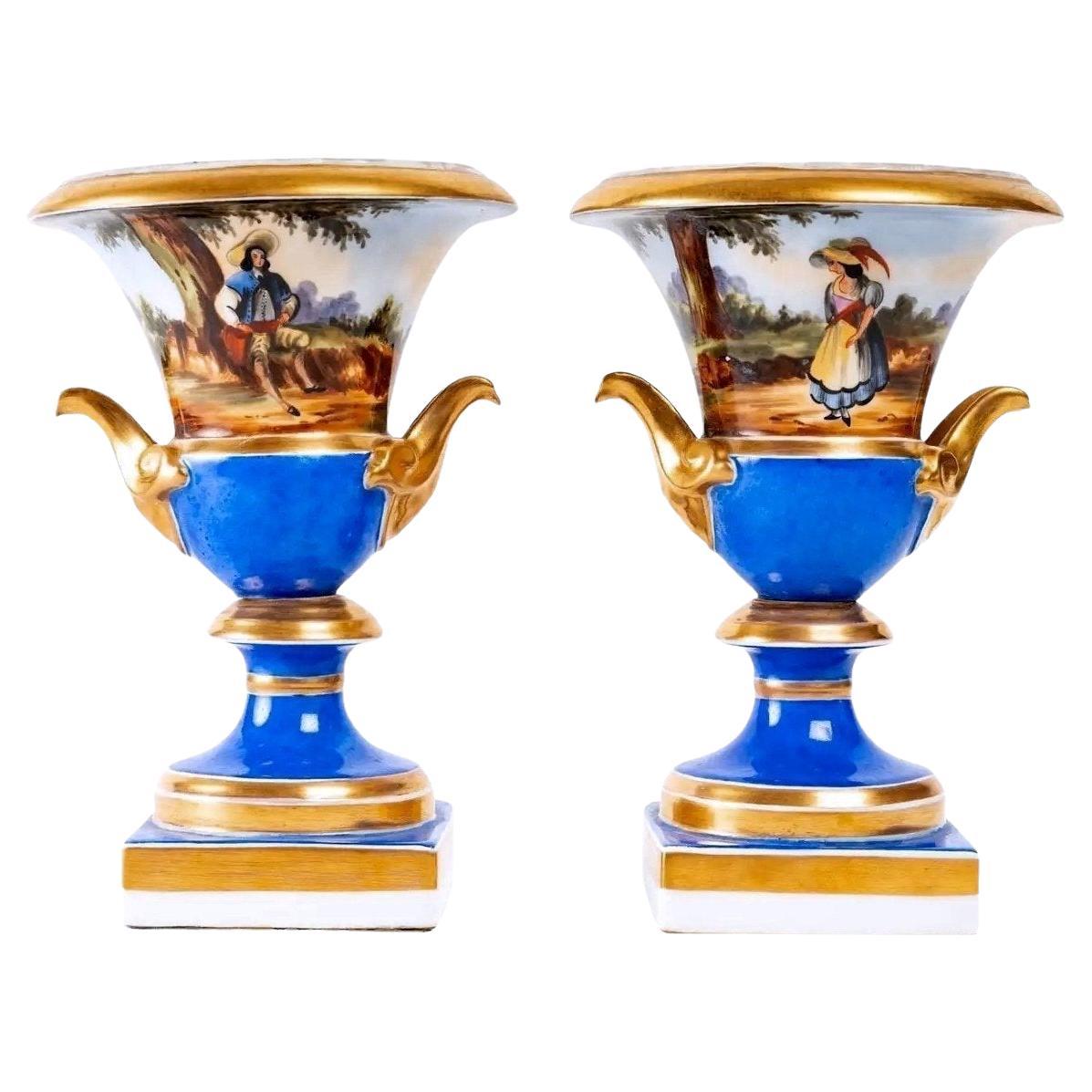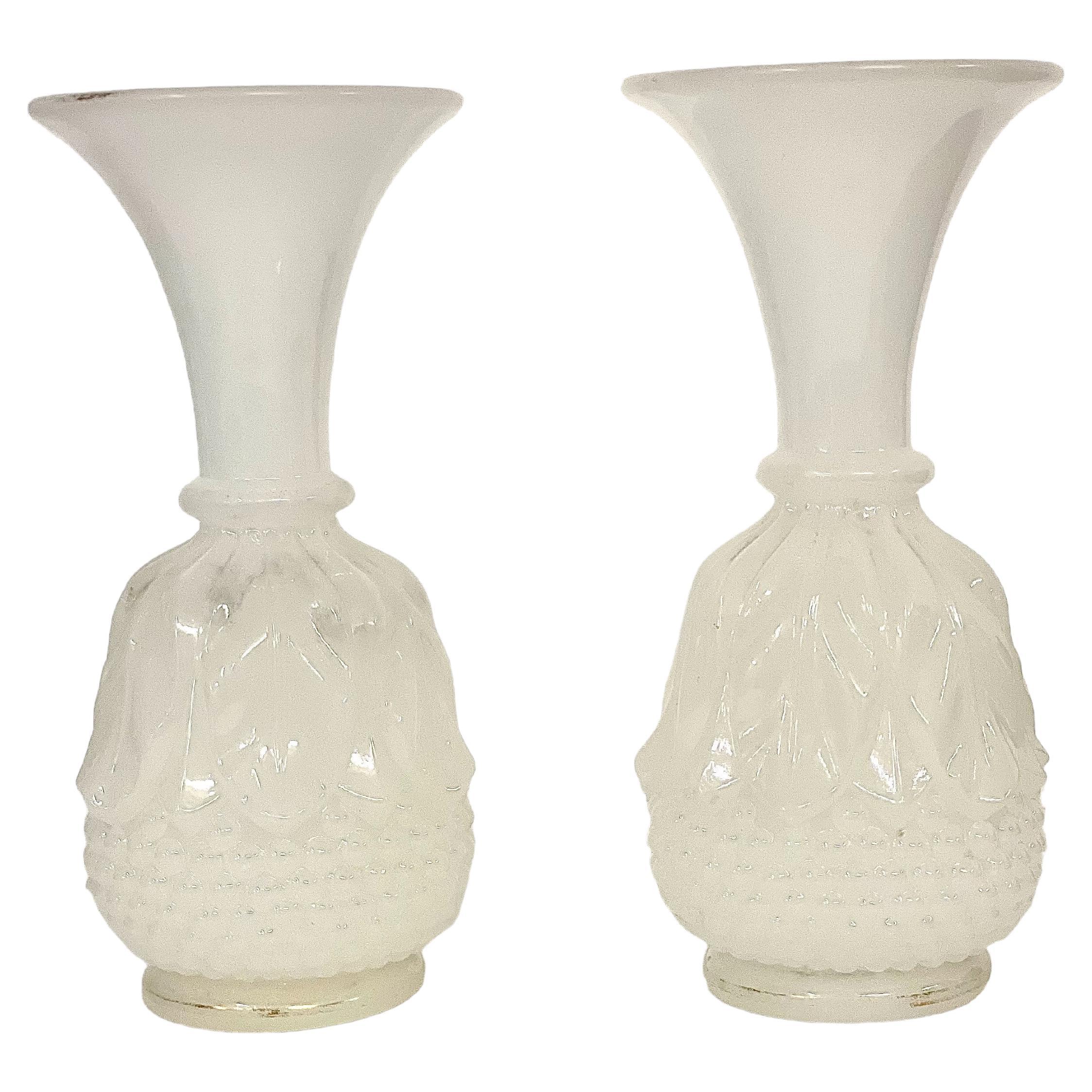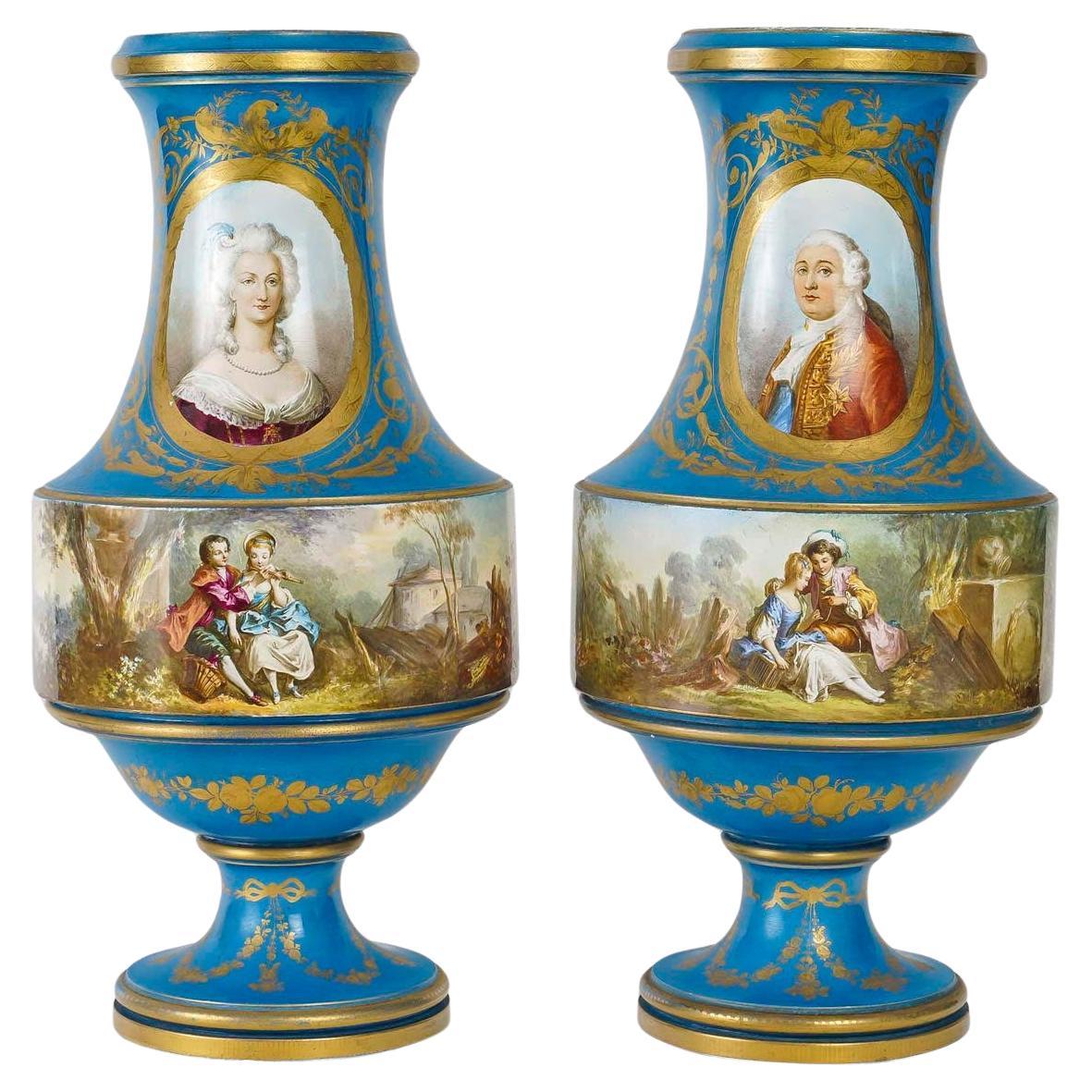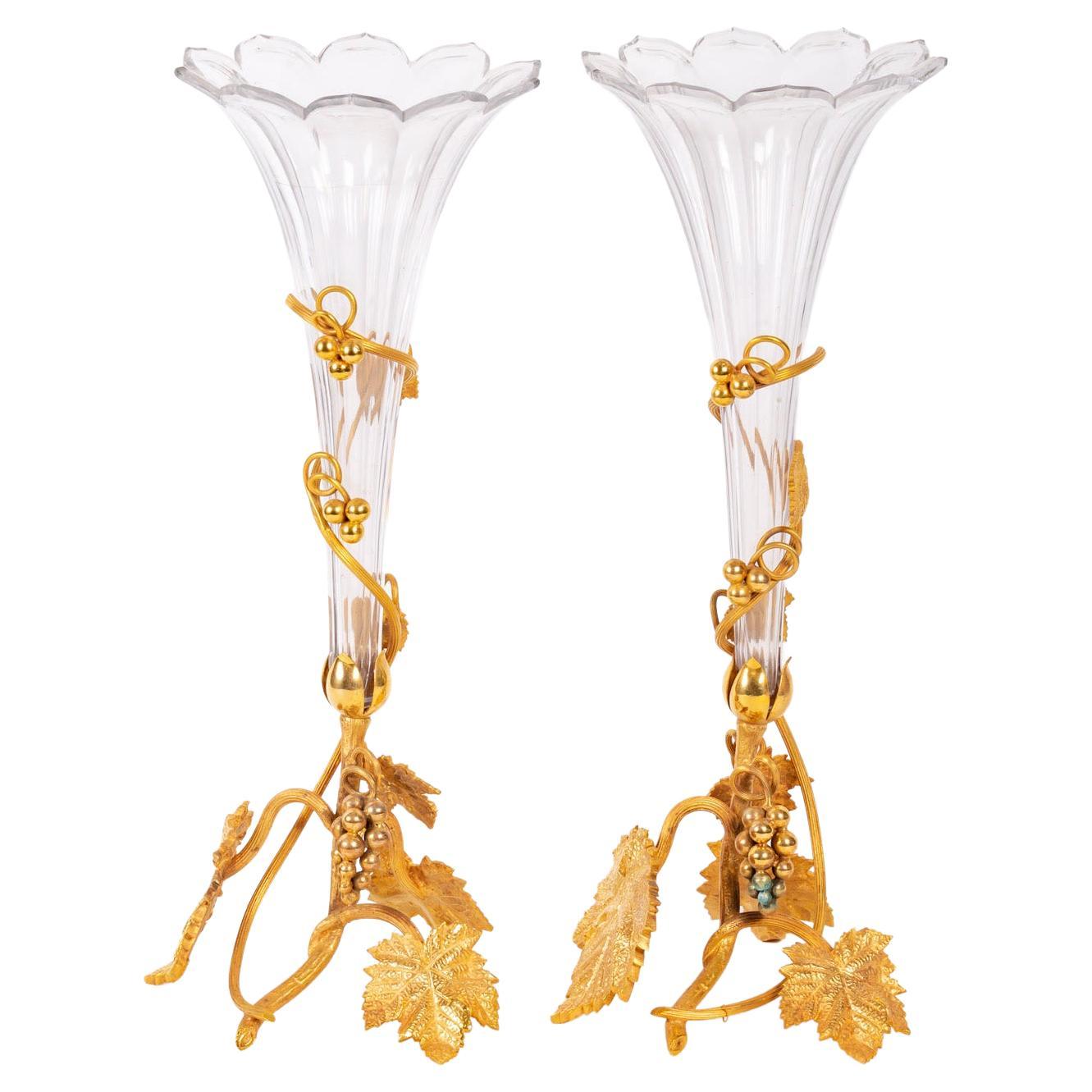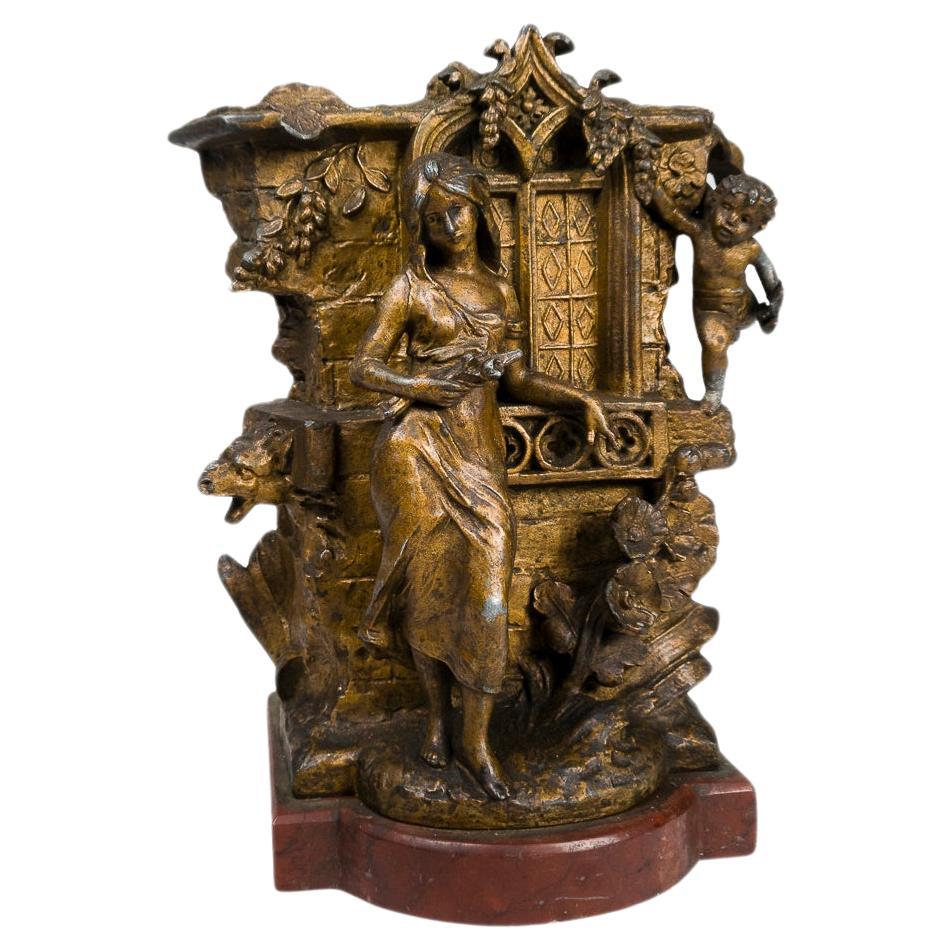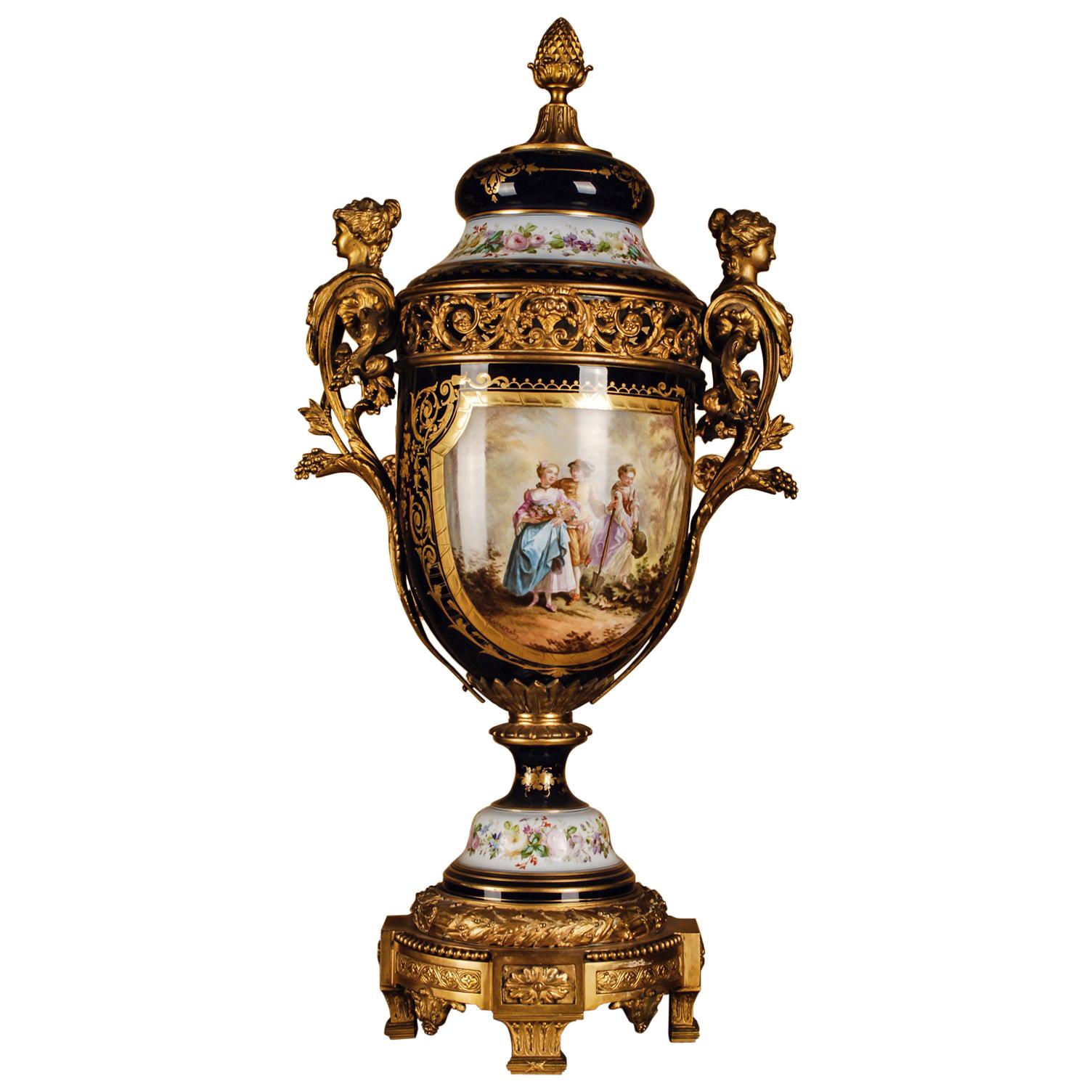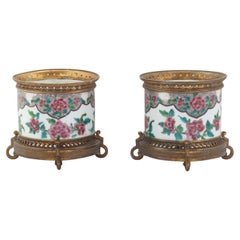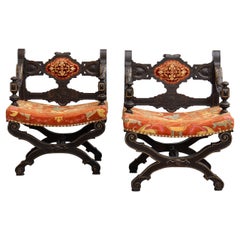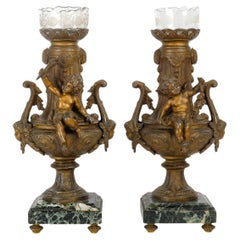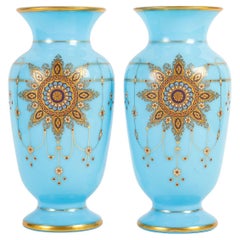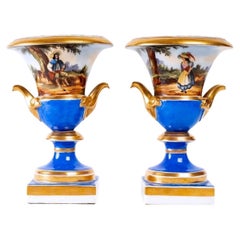
19th Century Pair of Napoléon III Limoges Enamel Vases
View Similar Items
Want more images or videos?
Request additional images or videos from the seller
1 of 18
19th Century Pair of Napoléon III Limoges Enamel Vases
About the Item
- Attributed to:Limoges (Painter)
- Dimensions:Height: 4.34 in (11 cm)Diameter: 2.76 in (7 cm)
- Sold As:Set of 2
- Style:Napoleon III (Of the Period)
- Materials and Techniques:
- Place of Origin:
- Period:
- Date of Manufacture:circa 1890
- Condition:
- Seller Location:Saint-Ouen, FR
- Reference Number:1stDibs: LU2612323883882
About the Seller
4.9
Vetted Seller
These experienced sellers undergo a comprehensive evaluation by our team of in-house experts.
1stDibs seller since 2017
56 sales on 1stDibs
Typical response time: 1 hour
More From This SellerView All
- French 19th Century Pair of Porcelain Cache-PotsLocated in Saint-Ouen, FRPair of polychromed hand painted porcelain with Japonisme floral decoration Ormolu-mounted with open-worked base and rim Louis XVI Style circa 1880.Category
Antique 1870s French Chinoiserie Planters, Cachepots and Jardinières
MaterialsOrmolu
$1,925 Sale Price / set20% Off - French 19th Century Brule Parfum or Pot Pourri VaseLocated in Saint-Ouen, FRA French 19th century perfume or pot pourri vase A hand-painted polychromed enamel on copper Chinese Export bowl designed with flowers and rince...Category
Antique 1870s French Louis XVI Decorative Bowls
MaterialsEnamel, Ormolu
- Pair of French Napoléon III Curule ArmchairsLocated in Saint-Ouen, FRPair of French Napoléon III Curule Armchairs Moulded, carved, blackened wood, enhanced with gold. Open-banded back decorated with interlacing, X-bas...Category
Antique 1890s French Napoleon III Armchairs
MaterialsWood, Trimming
$3,150 Sale Price / set40% Off - Diana the Huntress, 19th Century French Enamel TazzaBy Théophile SoyerLocated in Saint-Ouen, FRDiana The Huntress A 19th century French Enamel Tazza Tazza with scalloped edges in polychrome enamel, painted on copper with red background and gold highlights representing Diana the Huntress painted partly in grisaille; translucent and red counter-enamel. Paris, Théophile Soyer (1853-1940) circa 1880 Théophile Soyer (23 July 1853-20 February 1940) His father, Paul Soyer, gold medalist in 1878, created after the 1870 war the famous work-shop at 4 bis, rue Saint-Sauveur in Paris, which produced innumerable pieces, including some for jewellery, furniture and bronze. Théophile took classes with Yvon and Levasseur and made his debut at the 1870 Salon with an enamel copy of a work by Le Barbier aîné. He then exhibited regularly from 1875 to 1882. After his marriage in 1879 to Léa, née Dejoux, nicknamed Lucie, a pupil of Lamunière, he shared the management of the firm with her, just as he shared the gallery in her company at certain exhibitions. He won a silver medal at the Universal Exhibition of 1889, then a gold medal at the one in 1900. He was president of the Société des éclectiques, a humorous society founded in 1872, and vice-president of the Chambre de la céramique et du verre de l'Union. Founded in Paris during the Second Empire, the workshop directed by Paul Soyer (1832-1903) and then his son Théophile (1853-1940) produced various objects, paintings, mirrors, trays, vases, bonbonnières. Based on new sources of information, an article in l’Objet d’Art magazine, publications Faton, presents an update of the Soyer biographical elements and an analysis of their production marked by the neo-Renaissance and then Art Nouveau. A book of accounts allows us to observe the models of enamel "paintings", often from Meissonier’s work. The Soyers have greatly contributed to satisfying the taste of painted enamels that grew from the 1860s to the 1900 exhibition...Category
Antique 1880s French Napoleon III Decorative Dishes and Vide-Poche
MaterialsCopper, Enamel
- A Théodore Deck (1823-1891) Enamelled Faience Soliflore Vase circa 1875By Theodore DeckLocated in Saint-Ouen, FRThéodore DECK (1823-1891) A polychromatic enamelled earthenware soliflore and quadrangular shape vase with Sino-Japanese inspiration design of flowers and geometrical friezes all around. Impressed uppercase mark "TH.DECK" under the base. Circa 1875 Born in Guebwiller in Alsace, Théodore Deck trained as a ceramist in his home region, then in Germany. He went into partnership with his brother, Xavier Deck, to create his own factory in Paris in 1858. At the Exhibition of Industrial Arts in 1864, he presented pieces covered with transparent enamels that were not cracked, and then made his first attempts at reliefs under transparent enamels. He developed a bright turquoise color, famously renowned as "Bleu Deck". It is this nuance that we find on the salamander represented on this vase. In 1887 he published a treatise entitled "La Faïence", in which he explained some of his discoveries. That same year, he became director of the Manufacture de Sèvres. Theodore Deck (1823-1891) is a French ceramist born in Guebwiller in Alsace. He is passionate about chemistry and the physical sciences. In 1841, he joined the master stove maker Hügelin father as an apprentice in Strasbourg. In two years, he learned of the methods inherited from the 16th century, such as the encrustation of colored pastes in the style of Saint-Porchaire. This apprenticeship did not prevent him from spending his free time draw-ing or modeling clay in the studio of sculptor André Friederich. Escaping military service, he made a tour of Germany as is the tradition with fellow Alsatian stove-makers. The quality of his work allows him to obtain important orders in Austria for the castles of the provinces and the imperial palaces, in particular for the palace of Schönbrunn. He continues his journey in Hungary to Pest, to Prague, then, going north through Dresden, Leipzig, Berlin and Hamburg. On the strength of his apprenticeship, he arrived in Paris in 1847. Recommended by Hügelin, he went to the stove factory of the Bavarian potter Vogt, located rue de la Roquette. The Revolution of 1848 interrupts production and Deck decides to return to his hometown. His family then advised him to set up a small terracotta workshop: he made a few busts, statuettes, vases, lamps and copies of famous antiques there. Aware that this situation would not allow him to provide for himself properly, he returned to Paris in 1851 where he was employed by the widow Dumas, daughter of the earthenware maker Vogt for whom he had worked. Hired as a foreman, he supplied the drawings and models to the workers, while working the land himself. The following year, he made the decision to settle not far from his former employer at 20, rue de la Fontaine-au-Roi, probably using his ovens. His brother, Xavier Deck, joins him. It was officially in 1858 that the Deck brothers created their business and settled in Paris at 46, boulevard Saint-Jacques. Initially, the brothers only carry out coatings for stoves. But the business is going so well that barely a year after their installation, they want to diversify their production and engage in ceramics for the cladding of buildings as well as in shaped parts. Deck is interested in politics. In 1870, he opted for French nationality and was elect-ed deputy mayor in the 15th arrondissement of Paris. In 1861, at the Salon des arts et industries de Paris, which was held on the Champs-Élysées, Théodore Deck exhibited his works for the first time: these were pieces with an inlay decoration called “Henri II” and others. pieces covered with turquoise blue enamel or decoration in the style of Iznik ceramics.If he wins a silver medal, reviews are mixed, however. The following year, on the occasion of the Universal Exhibition of 1862 in London, he won over English customers. He surprised by presenting, like the previous year, his Alhambra Vase...Category
Antique 1870s French Japonisme Vases
MaterialsFaience
$4,747 Sale Price30% Off - Théodore Deck (1823-1891), Miniature Pair of Faience Vases circa 1870By Theodore DeckLocated in Saint-Ouen, FRTheodore Deck (1823-1891) A deep green enameled faience miniature pair of vases molded in the Chinese Archaistic Taste. Coves in the shape of elepha...Category
Antique 1870s French Chinoiserie Vases
MaterialsFaience
You May Also Like
- Pair of Regula Vases, 19th Century, Napoleon III Period.Located in Saint-Ouen, FRPair of Regula vases, 19th century, Napoleon III period. Pair of patinated regula vases, crystal vases, green marble base, 19th century, Napoleon III period. H: 39cm, W: 19cm, D: 18cmCategory
Antique 19th Century French Napoleon III Vases
MaterialsCrystal, Marble
- Pair of Opaline Vases, 19th Century, Napoleon III Style.Located in Saint-Ouen, FRPair of Opaline Vases, 19th Century, Napoleon III Style. A pair of gold enamelled turquoise opaline vases, 19th century, Napoleon III period. h: 30,5cm, d: 15cmCategory
Antique 19th Century French Napoleon III Vases
MaterialsOpaline Glass
- Pair of Medici Porcelain Vases, 19th Century, Napoleon III.Located in Saint-Ouen, FR" Pair of Medici Porcelain Vases, 19th Century, Napoleon III. " Pair of Medici vases, Napoleon III period, 19th century in porcelain H: 21cm, D: 14cmCategory
Antique 19th Century French Napoleon III Vases
MaterialsPorcelain
- 19th Century Napoleon III Pair of White Opaline VasesLocated in LA CIOTAT, FRA very attractive pair of matching white 'soapy' opaline antique French vases, dating from the Napoleon III period (mid-19th century) and each beautifully modelled with a pronounced ...Category
Antique 19th Century French Napoleon III Vases
MaterialsOpaline Glass
- Pair of Sèvres Porcelain Vases, Napoleon III Period, 19th Century.By Manufacture Nationale de SèvresLocated in Saint-Ouen, FRPair of Sèvres porcelain vases, Napoleon III period, 19th Century. A pair of Sèvres porcelain vases, richly decorated with medallions and gallant scenes, Napoleon III period, 19th C...Category
Antique 19th Century French Napoleon III Vases
MaterialsPorcelain
- Antique French Limoges Enamel on Copper Portrait Vase, 19th CenturyBy LimogesLocated in San Francisco, CAA small antique baluster shape portrait vase. Enamel on copper with a hand painted young woman and romantic scenic background. Unsigned. French, seco...Category
Antique 19th Century French Vases
MaterialsCopper, Enamel
Recently Viewed
View AllMore Ways To Browse
Pair Limoges
Limoges Napoleon
Antique Limoges Vases
Limoge Vases Antique
Antique Limoges Vase
Limoges Painted Vase
19th Century Copper Container
Limoge Hand Painted Vase
French Enamel On Copper Vases
19th Century Limoges Vase
Limoges Vases Pair
Miniature Limoges
Limoges Miniatures France
Swirled Art Glass
Art Glass Blown Mid Century Vase
Heavy Blown Glass
Arts Crafts Pottery
Germany Glazed Vase
